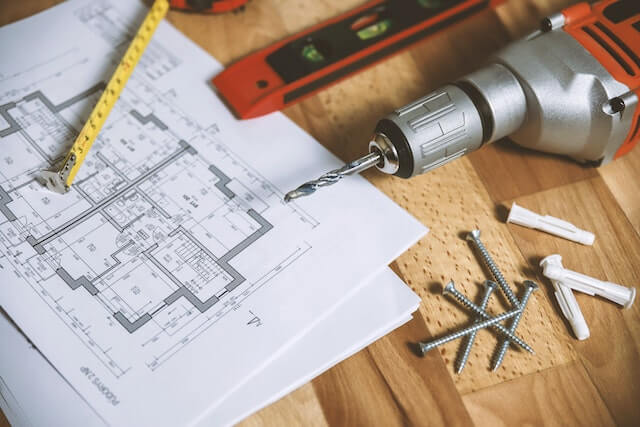Renovating rental properties is a strategic move that can enhance property value, attract high-quality tenants, and increase rental income. However, this endeavor requires careful planning and execution to ensure a positive return on investment (ROI) and long-term success.
Here are the essential do’s and don’ts of renovating rental properties to guide landlords toward informed decisions that maximize the benefits of property renovation.
Do’s of Renovating Rental Properties
Plan Thoroughly
The renovation journey should commence with a comprehensive plan. Outline the project’s scope, set a realistic budget, and establish a clear timeline. Consider the specific needs and preferences of your target tenant demographic.
A well-thought-out plan serves as your roadmap throughout the renovation process. It helps you stay on budget, avoid costly mistakes, and ensures that the improvements align with your rental property’s market value and appeal.

Focus on Essential Repairs
Prioritize essential repairs that address safety, functionality, and compliance with local housing codes. This includes addressing plumbing issues, electrical problems, structural damage, and any safety hazards.
Ensuring the property is safe and fully functional is not only a legal requirement but also crucial for tenant satisfaction and retention. It establishes a solid foundation for further renovations.
Hire Professional Contractors
Resist the urge to handle all renovations yourself, especially if you lack the necessary skills. While DIY projects can save money, they can also lead to costly errors and subpar results.
Professional contractors bring expertise, speed, and quality to your renovation projects. Hiring skilled tradespeople ensures that the work is done correctly, adheres to local building codes, and stands the test of time.
Focus on Key Areas
Prioritize key areas that have the most significant impact on tenant satisfaction and property value. Kitchens, bathrooms, and common living spaces often offer the best returns on investment.
Concentrating your renovation efforts on high-impact areas maximizes the value you receive from your investment. These spaces are where tenants spend the most time and where upgrades are most noticeable.
Opt for Durable Materials
You may feel tempted to use cheap materials because they are more affordable. However, high-quality materials go a long way. Invest in durable and low-maintenance materials that can withstand the rigors of rental property life. Consider materials like laminate or hardwood flooring, easy-to-clean paint, and solid-surface countertops like granite. Tenants see the value in the materials you used and would be more willing to pay a higher price.
Durable materials also reduce ongoing maintenance costs and enhance the property’s appeal to tenants. They contribute to a positive tenant experience and can help protect your investment in the long run.
Keep Aesthetics Neutral
Choose neutral color schemes and classic designs for finishes like paint, flooring, and fixtures. This approach allows tenants to personalize their living space without conflicting with bold or highly specific design choices.
Neutral aesthetics have broad tenant appeal, making it easier to attract and retain a diverse range of tenants with varying design preferences.

Consider Energy Efficiency
When making appliance or fixture upgrades, prioritize energy-efficient options. This includes energy-efficient appliances, LED lighting, and improved insulation.
Energy-efficient features not only lower utility costs for tenants but also contribute to a more sustainable property. They also align with modern environmental consciousness.
Don’ts of Renovating Rental Properties
Overpersonalize
Avoid overly personal design choices that cater to your specific tastes. Highly specific wallpaper patterns, unique color schemes, or niche decor may limit tenant interest.
Overpersonalization can deter potential tenants wh o may not share your design preferences, potentially leading to longer vacancies.
Overspend on Luxuries
Resist the urge to over-renovate with luxury features that do not align with your property’s rental market. While high-end finishes can be appealing, they may not justify a significant rent increase.
Overspending on non-essential luxuries can extend your ROI timeline, making it difficult to recoup renovation costs through increased rental income.
Ignore Legal Compliance
Do not ignore local housing codes and regulations. Failing to comply with legal requirements can result in fines, legal issues, and a damaged reputation.
Legal compliance ensures that your property is safe, habitable, and in line with current standards. It also reduces the risk of disputes with tenants and regulatory authorities.
Rush the Process
Taking the time to plan and execute renovations properly ensures a higher-quality output that meets both your expectations and those of your tenants.
It’s understandable if you worry about prolonged vacancies because you won’t be able to accommodate tenants while renovating. However, avoid rushing through the renovation process. Hasty decisions can lead to costly mistakes, subpar workmanship, and potential tenant dissatisfaction.
To ease your worry about long vacancies, you can utilize property listing platforms like Padleads. It would speed up the tenant acquisition process with its listing-syndication feature. Syndicate your listing to popular websites so that more potential tenants can see it.

Neglect Maintenance
Do not solely focus on renovations while neglecting ongoing property maintenance. Regular upkeep is essential to preserve the property’s value and functionality. Neglecting maintenance can lead to costly repairs, deteriorating property conditions, and dissatisfied tenants.
Forget the Exterior
It is easy to get caught up in interior renovations, but neglecting the exterior can be a critical mistake. The property’s curb appeal sets the first impression for potential tenants, so it’s essential to maintain well-kept landscaping, repair any exterior damage, and consider fresh paint or siding if needed.
A neglected exterior can deter potential tenants before they even step inside. A well-maintained exterior communicates that you care about the property’s overall condition, making it more enticing to prospective renters.
Renovating rental properties is a strategic investment that can significantly benefit landlords when approached with careful consideration and adherence to best practices. Knowing what to do and what to avoid is key to the success of the renovation process.